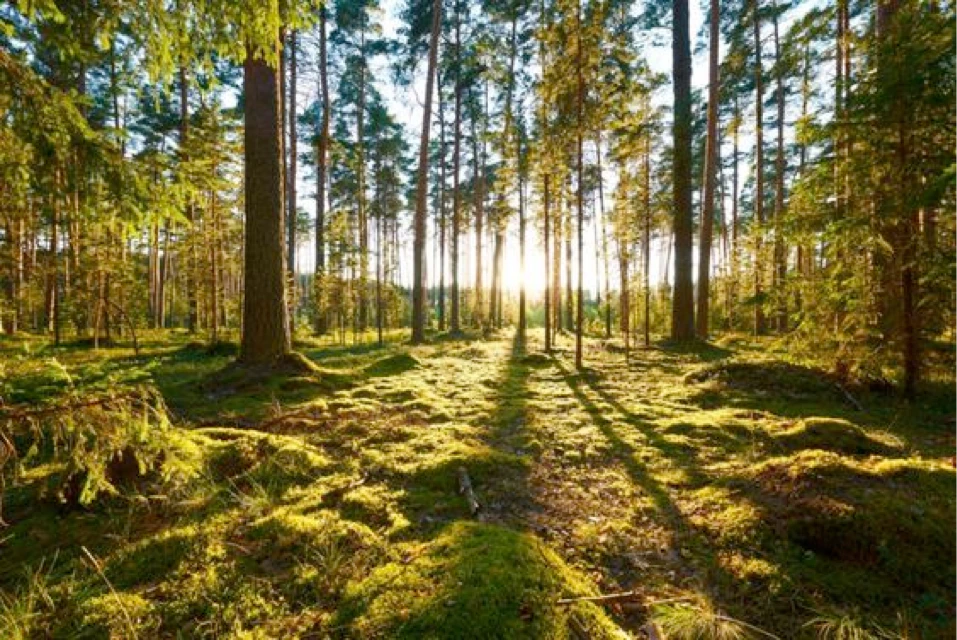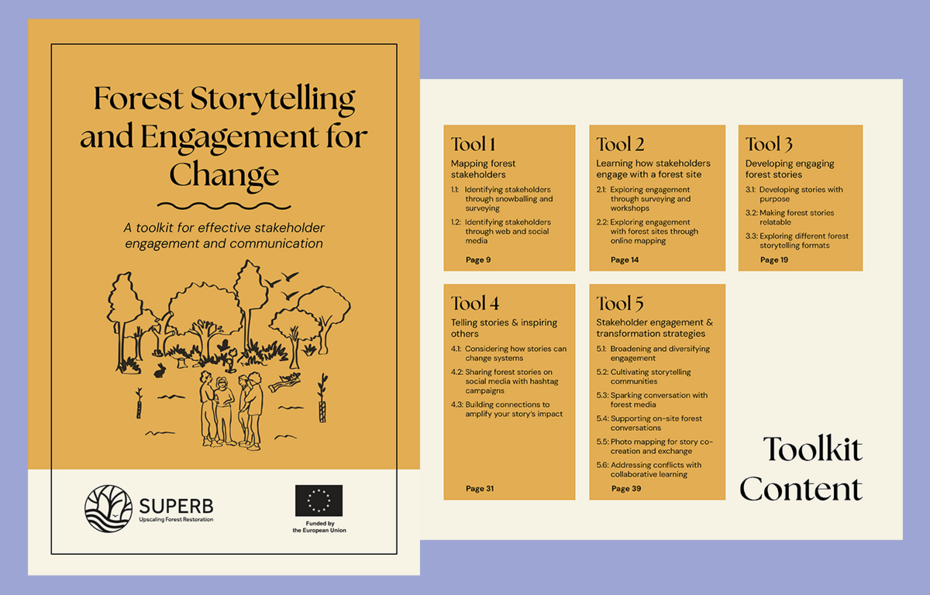Guidelines for the Development of Upscaling Plans
1. Stakeholder engagement

This section of your upscaling route map should capture learning from the pilot in relation to stakeholders important for upscaling. Below we suggest how you can inform those taking your work forward by providing starting points for stakeholder engagement and the tools and techniques that have been developed within SUPERB
Restoration is a joint activity among a wide range of stakeholders; hence, upscaling initiatives need a stakeholder engagement plan that identify relevant stakeholders important for implementing a large restoration project. Mansourian et al. (2017) identified a set of functions that stakeholders have in relation to restoration.
- Financing function to ensure resources for the project.
- Policy support function that identifies legal and governance options for restoration on national and international level.
- Design and planning function of restoration project.
- Advice function on technical and scientific issues. Implementation function for restoration actions.
- Monitoring and evaluation function.
Who can fill these functions varies and we suggest six categories of stakeholders that are relevant to consider (Agüero et al. 2023).
- Forest landowners and in situ managers
- Policy makers and regulating actors
- Forest/landscape value chains & other economic actors
- Financing actors
- Civil society
- Education & Research.
As well as recognizing the functions of different stakeholders it is also important to consider the restoration objectives or “constructs”, that different stakeholder groups may emphasize.
Mansourian (2018) topology of different objectives, “constructs”, for forest restoration
|
Construct |
Emphasis |
|
1. Forest restoration is about safeguarding biodiversity and regaining ecological integrity |
Focus on the need to scale up conservation efforts by including restoration in the toolbox. The emphasis is on biodiversity, with a focus on restoring habitat for endangered species |
|
2. Forest restoration can reduce land degradation and enhance resource provisioning |
Focus is on improving land productivity and reducing land degradation, i.e. a focus on provisioning ecosystem services |
|
3. Forest restoration helps to build natural capital |
Focus on economic values of land and the market services that restoration can provide – a pure cost-benefit emphasis |
|
4. Forest restoration supports sustainable timber production |
Focus on restoring forest cover to provide biomass, increase productivity and sustained yield |
|
5. Forest restoration contributes to climate change mitigation and adaptation |
Focus on the role of trees in both carbon sequestration and social and ecological adaptation to climate change |
As different actors may emphasize different values and objectives, they may also disagree on how a restoration program should be set up. This can result in conflicts that need to be addressed (O’Brien et al. 2025). However, conflicts come in different forms and the categories identified by Young et al. (2010) is helpful for understanding underlying causes of conflict.
- Conflicts over beliefs and values, where differences exist over normative perceptions
- Conflicts of interest when groups want different things from the same resource
- Conflicts regarding process, relating to the different approaches to decision-making
- Conflicts over information relating to situations where data are lacking, misunderstood or perceived in different ways
- Interpersonal conflicts relating to personality differences between individuals or groups, including issues of communication and mistrust
Of these, the first two could be seen as “true conflicts” and good stakeholder engagement can make these explicit even when shared understanding/consensus among stakeholders is not possible. The last three can be addressed during stakeholder engagement and a successful engagement could resolve such conflicts.
As stakeholder engagement is needed during all parts of a larger restoration project, you need to identify the role of different stakeholders both for the planning of a larger restoration project, communication of developed plans as well as for the implementation of the project program (Agüero et al. 2023). outlines transformative stakeholder engagement including a set of principles as keystones for demo engagement strategies. These include co-creation, inclusivity, transparency, capacity building, conflict resolution and management, and evaluation. Similarly, Partners to the UN Decade on Ecosystem Restoration highlights as a core principle that “Ecosystem restoration promotes inclusive and participatory governance, social fairness and equity from the start and throughout the process and outcomes” (FAO, SER & IUCN CEM. 2023). By carefully considering these principles you can identify how stakeholders can leverage support for and help addressing barriers to upscaling.
Ultimately, engaging people in restoration is to provide a story that highlight the needs and benefits of restoration. As a part of SUPERB we have developed approaches to mapping forest stories, understanding the context of forest restoration, and seeing how stories can help to deepen and broaden participation around restoration efforts. This includes a tool kit for effective stakeholder engagement and communication.
Related resources
Forest Storytelling and Engagement for Change
Forest Storytelling and Engagement for Change offers a range of practical tools and starting points to support those living and working with forests to map which kinds of stories are told and to explore how to tell stories that can make a difference.


